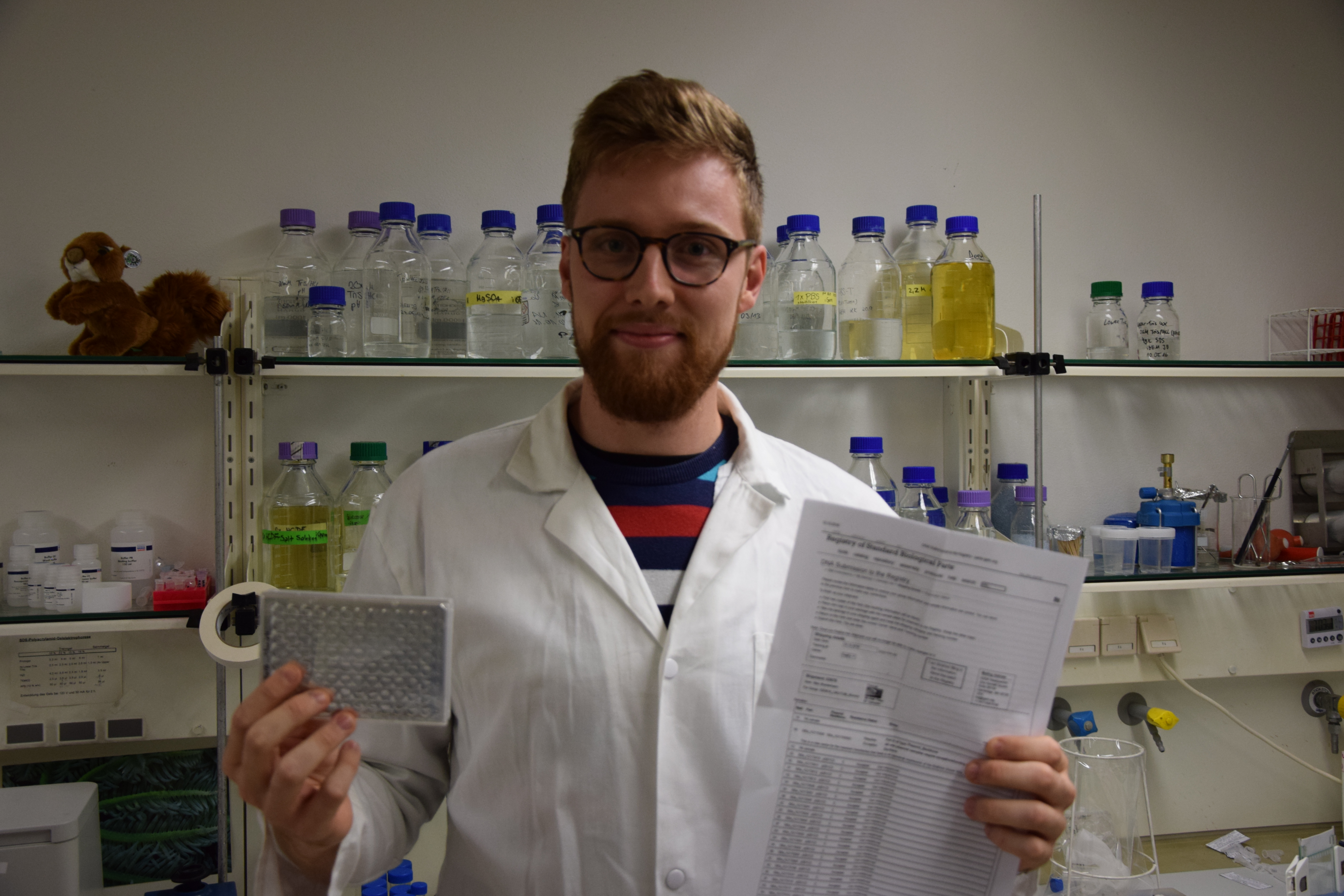| Line 8: | Line 8: | ||
<div class="white-box"> | <div class="white-box"> | ||
All of our BioBricks were assembled according to the RFC[10] or RFC[25] standard. For all basic parts the RFC[10] standard was used. Because the RFC[10] scar codes for a stop codon this assembly standard does not allow the generation of fusion proteins. Therefore all fusion proteins were assembled by RFC[25] standard. Thus all RFC[10] and RFC[25] digestion sites were eliminated from the BioBricks either directly when planing the genesynthesis or by quick-change PCR. Only one of the BioBricks which we supply for the community could not be freed from all digestion sites, because one part of the BioBrick | All of our BioBricks were assembled according to the RFC[10] or RFC[25] standard. For all basic parts the RFC[10] standard was used. Because the RFC[10] scar codes for a stop codon this assembly standard does not allow the generation of fusion proteins. Therefore all fusion proteins were assembled by RFC[25] standard. Thus all RFC[10] and RFC[25] digestion sites were eliminated from the BioBricks either directly when planing the genesynthesis or by quick-change PCR. Only one of the BioBricks which we supply for the community could not be freed from all digestion sites, because one part of the BioBrick | ||
| − | <div> | + | </div> |
=Featured parts= | =Featured parts= | ||
Revision as of 00:05, 17 October 2016
biotINK project overview
General part design using RFC[10] & RFC[25]
All of our BioBricks were assembled according to the RFC[10] or RFC[25] standard. For all basic parts the RFC[10] standard was used. Because the RFC[10] scar codes for a stop codon this assembly standard does not allow the generation of fusion proteins. Therefore all fusion proteins were assembled by RFC[25] standard. Thus all RFC[10] and RFC[25] digestion sites were eliminated from the BioBricks either directly when planing the genesynthesis or by quick-change PCR. Only one of the BioBricks which we supply for the community could not be freed from all digestion sites, because one part of the BioBrick
Featured parts
Parts we improved
- GMK_TK90 "Kill-Switch": [http://parts.igem.org/Part:BBa_K404113 BBa_K404113] & [http://parts.igem.org/Part:BBa_K782063 BBa_K782063] were improved as both parts were wrong as they both contained a forbidden PstI restriction site that made it impossible to ligate BioBricks downstream of the BioBrick. A corrected BioBrick was provided ([http://parts.igem.org/Part:BBa_K2170060 BBa_K2170060])
- Tet-Operator: [http://parts.igem.org/Part:BBa_I739001 BBa_I739001] was improved by confirming functionality, adding a Tet-Operator together with an OmpA secretion signal yielding the part [http://parts.igem.org/Part:BBa_K2170141 BBa_K2170141] which can be used by teams for the SEC-dependent secretion in the bacterial periplasm.
- The collection of eukaryotic signal peptides in RFC[25] was expanded significantly by identifying non-working signal peptides ([http://parts.igem.org/Part:BBa_I712009 BBa_I712009], as not in RFC[25]), characterizing working signal peptides ([http://parts.igem.org/Part:BBa_K157001 BBa_K157001]) and designing, constructing and testing two additional signal peptides with significantly higher functionality.
Impressions from the packaging
After month of cloning we could finally pack and send our 65 BioBricks on Friday the 14th of September.
Sendbox
<groupparts>iGEM2016 LMU-TUM_Munich</groupparts>




